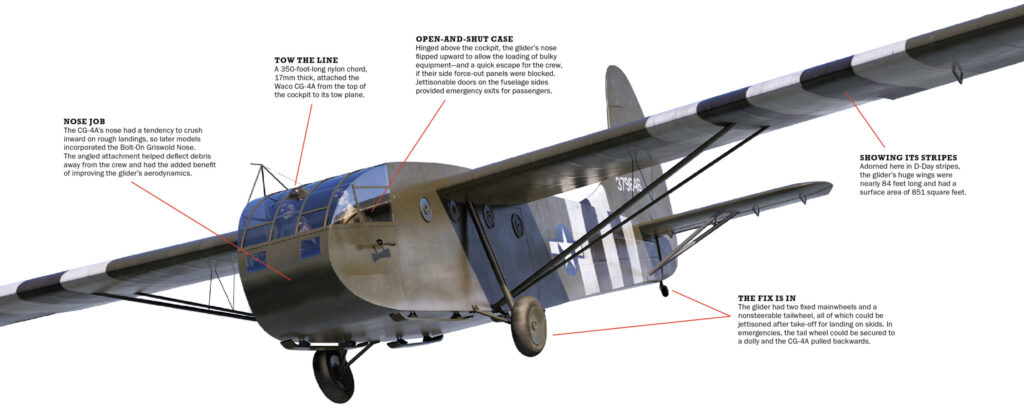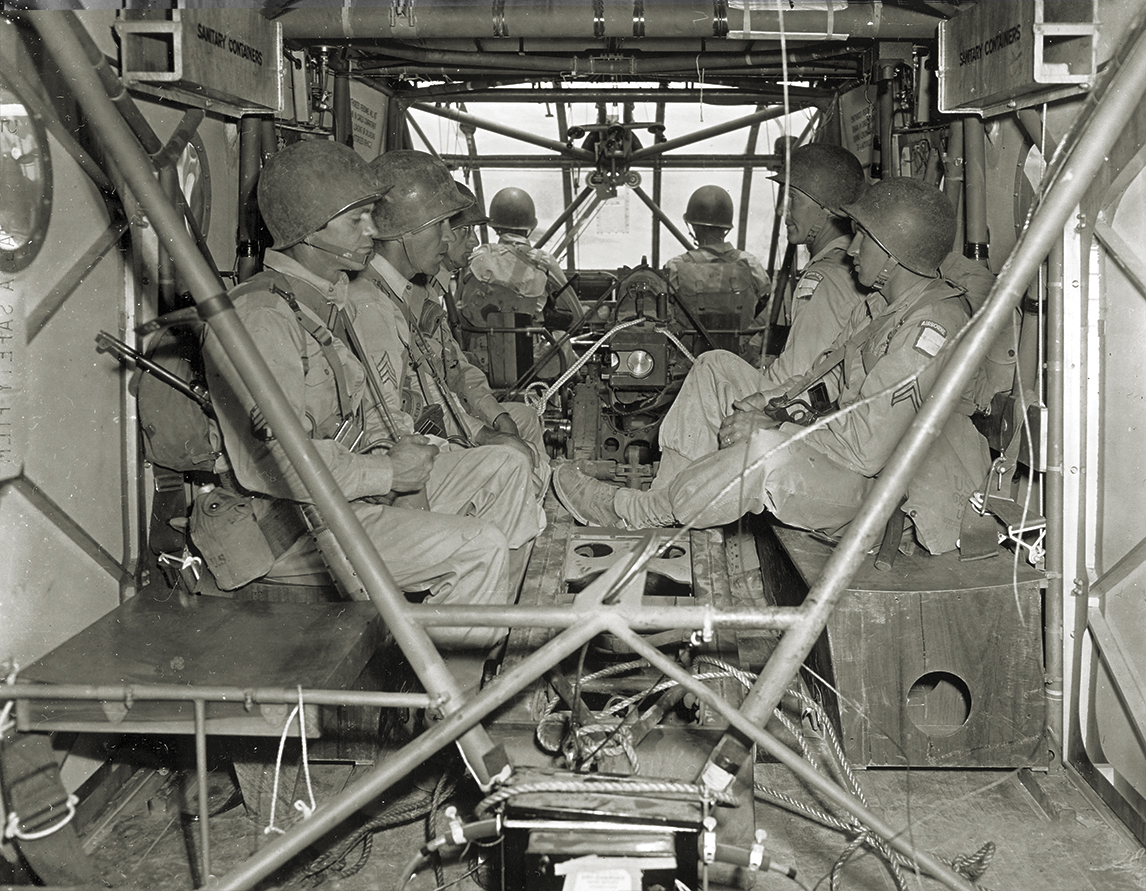The Wehrmacht jarred the Allies into action when it introduced gliders to the fight for Belgium in 1940 and Crete in 1941. By 1942, the U.S. had developed its own glider prototype, the Waco CG-4A, to deliver men and materiel to the front or behind enemy lines and supplement the transport aircraft that dropped paratroopers and supplies. The high-wing monoplane, made primarily of fabric and plywood over steel tubing, could carry up to 13 fully equipped troops or an array of heavy machinery—7,500 pounds in total. Ford and several other companies built nearly 14,000 wartime gliders. The engineless CG-4A had to be tethered and towed to its destination, a job most often performed by Douglas C-47 Skytrains. The gliders saw extensive service in the invasion of Sicily in July 1943 and during the 1944 campaigns in France and the Netherlands. But it wasn’t a refined system. Once released, pilots in mass operations often had to complete for viable landing spots, and quite a few gliders crashed. One American private recalled the scene on the ground: “We thought it was incoming artillery when they began crashing in, and we began looking for cover.” In theory, the gliders could be retrieved by C-47s via a tail hook and pick-up cord, but this proved difficult in real-life situations, and most CG-4As were abandoned or destroyed after landing. Despite this, after D-Day Allied Supreme Headquarters reported “sober satisfaction” with the gliders’ performance. After the war, most CG-4As were sold for parts. Some, their wings and tails detached, saw second lives as trailer homes or vacation cabins.







